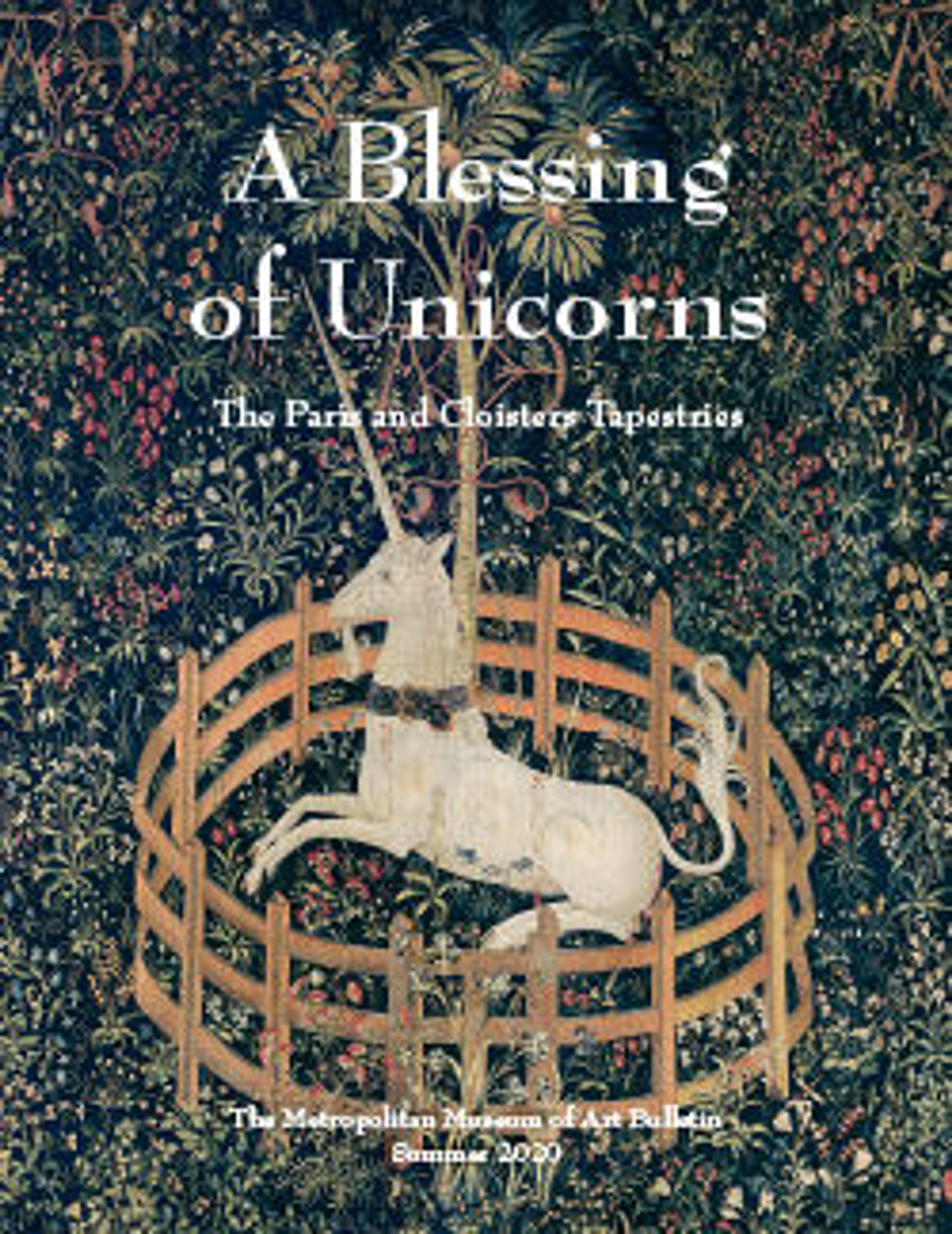The Unicorn Surrenders to a Maiden (from the Unicorn Tapestries)
In these two fragments of a single tapestry (see also 38.51.1), the unicorn appears to have been tamed. He seems so docile, in fact, that he is oblivious to the dog licking the wound on his back and stares loving at the maiden who must have subdued him. Most of her figure is missing, the result of damage incurred after the tapestries were looted in 1793. The remaining traces include the maiden's right arm, clothed in red velvet and visible between the beard and throat of the unicorn, and her fingers, seen gently caressing the bottom of the animal's mane. She sits in an enclosed garden (hortus conclusus), often a metaphor for the purity of a maiden. The more complete female figure may be signaling to the hunter outside the garden, who in turn sounds the horn to summon the others.
Artwork Details
- Title: The Unicorn Surrenders to a Maiden (from the Unicorn Tapestries)
- Date: 1495–1505
- Culture: South Netherlandish
- Medium: Wool warp with wool, silk, silver, and gilt wefts
- Dimensions: Overall: 78 x 25 1/2 in. (198.1 x 64.8 cm)
- Classification: Textiles-Tapestries
- Credit Line: Gift of John D. Rockefeller Jr., 1938
- Object Number: 38.51.2
- Curatorial Department: Medieval Art and The Cloisters
More Artwork
Research Resources
The Met provides unparalleled resources for research and welcomes an international community of students and scholars. The Met's Open Access API is where creators and researchers can connect to the The Met collection. Open Access data and public domain images are available for unrestricted commercial and noncommercial use without permission or fee.
To request images under copyright and other restrictions, please use this Image Request form.
Feedback
We continue to research and examine historical and cultural context for objects in The Met collection. If you have comments or questions about this object record, please complete and submit this form. The Museum looks forward to receiving your comments.
